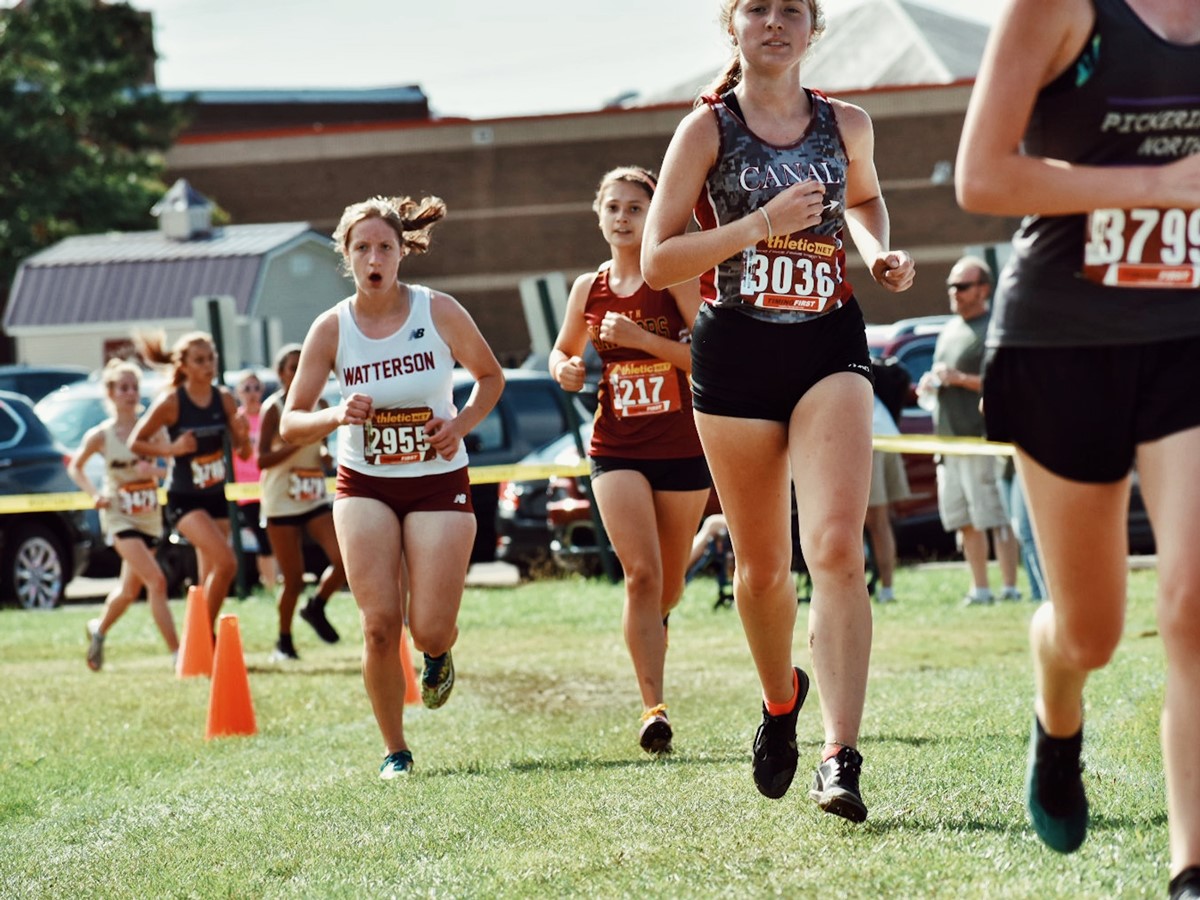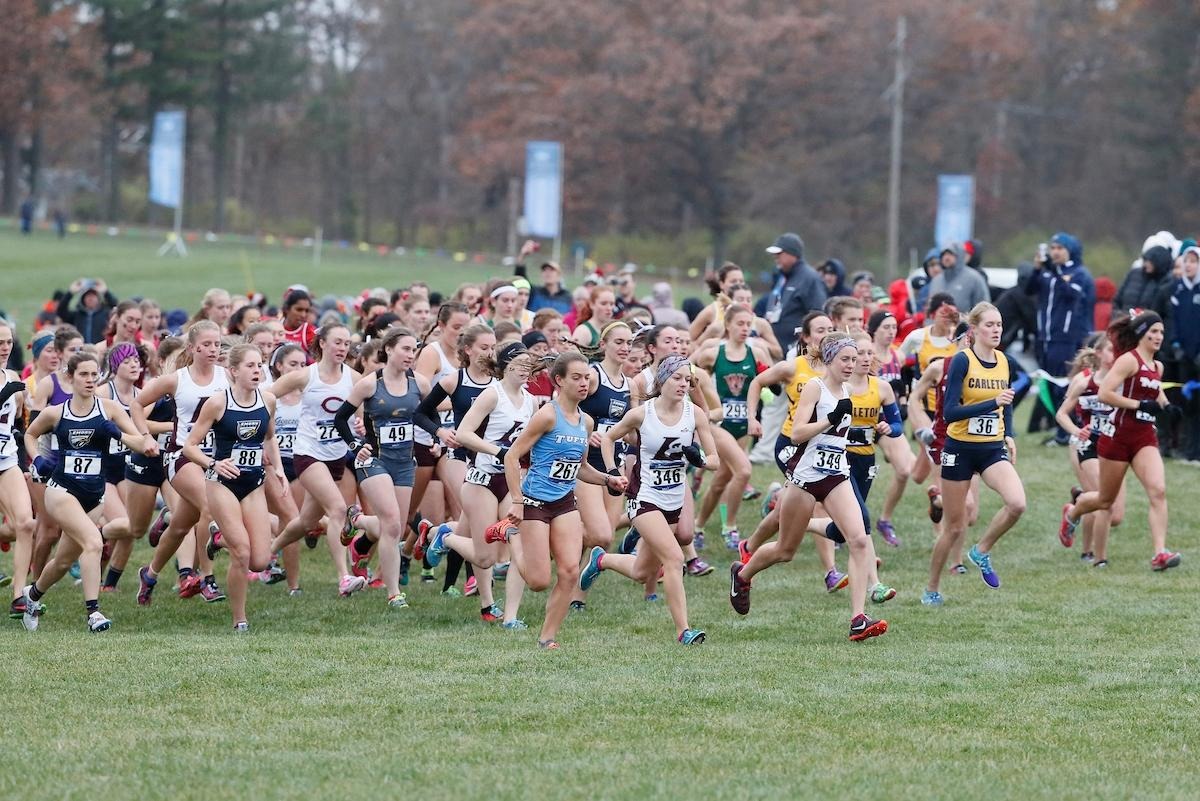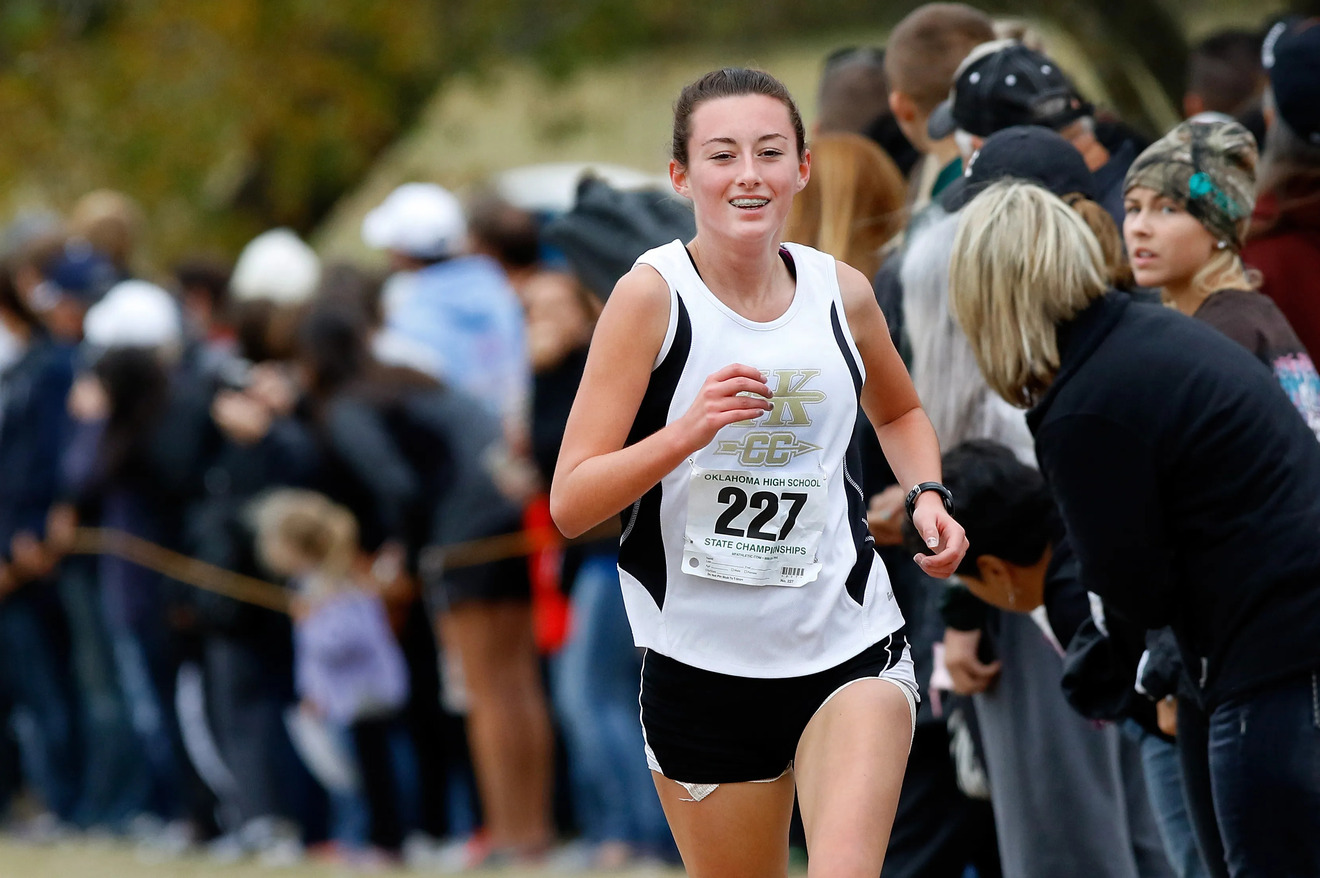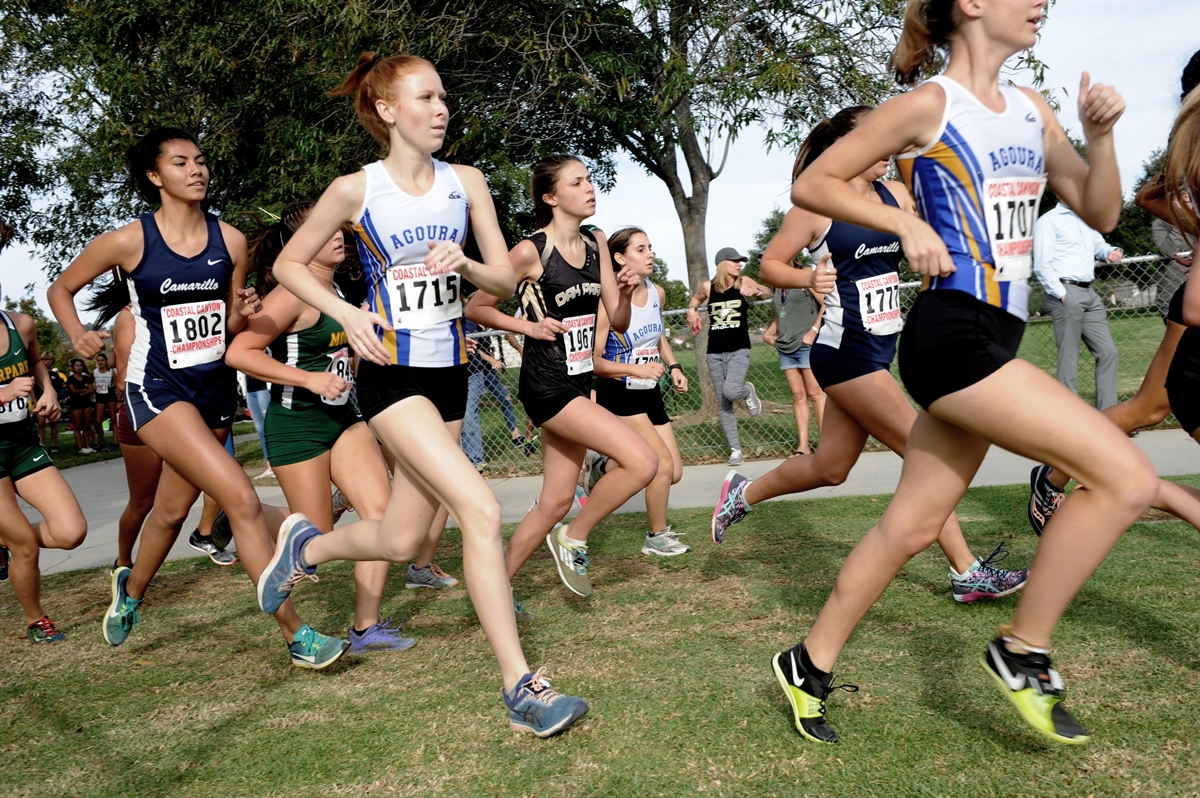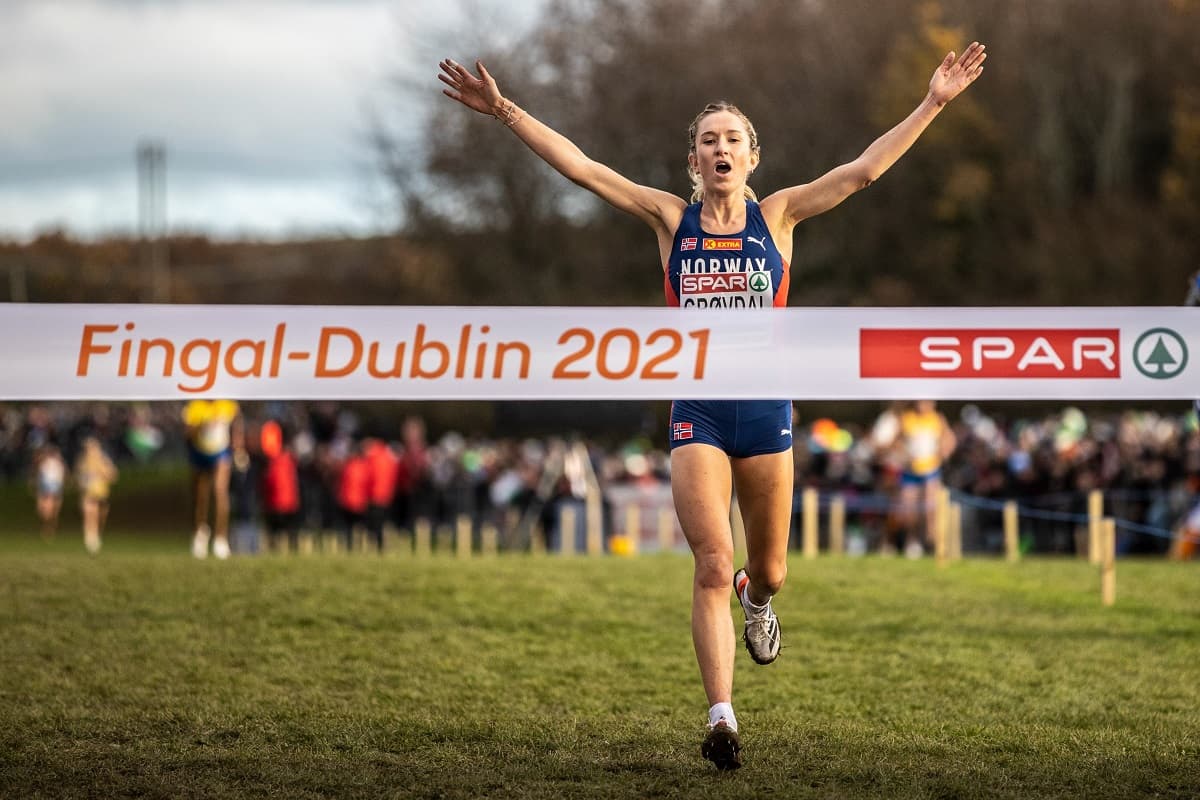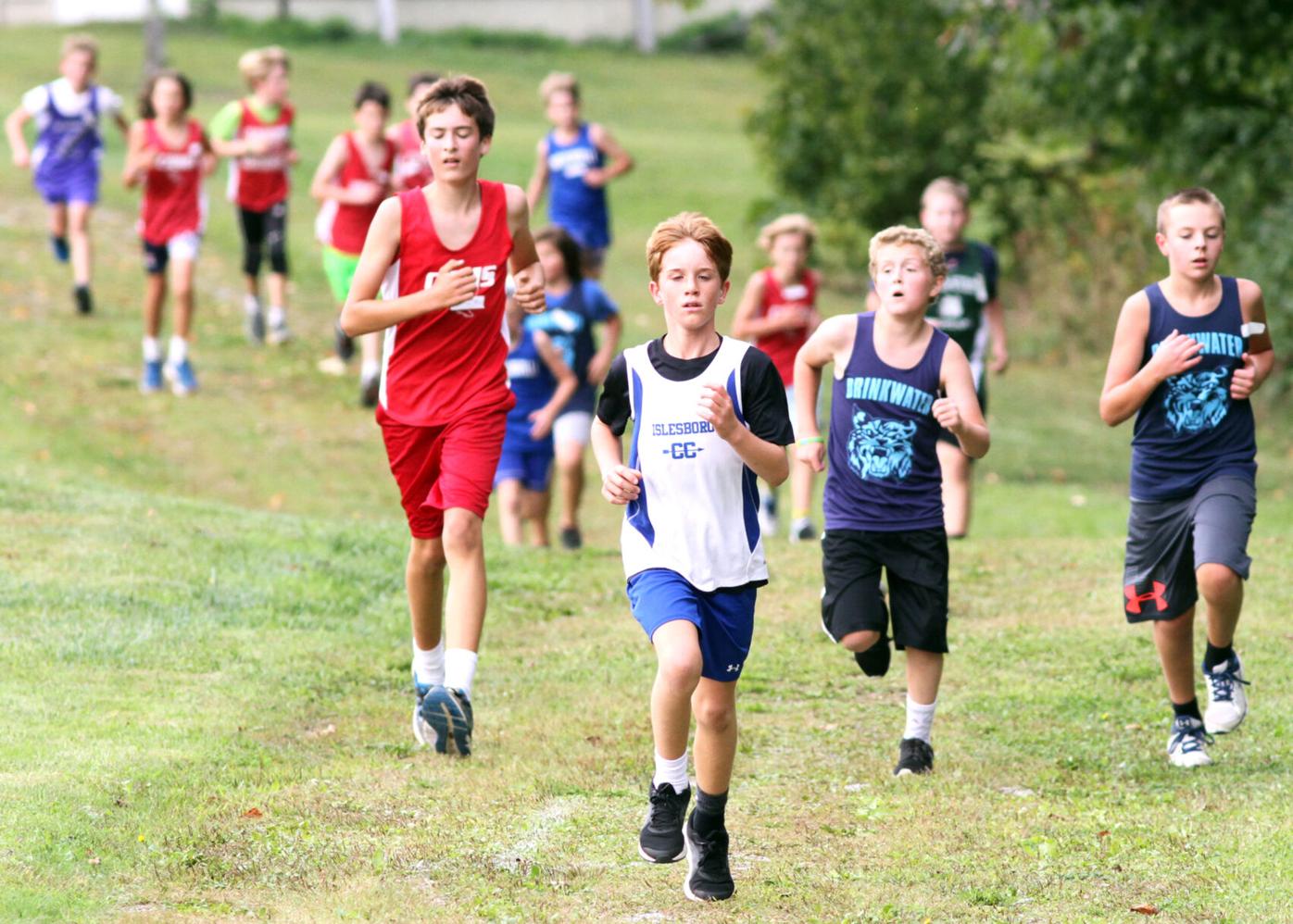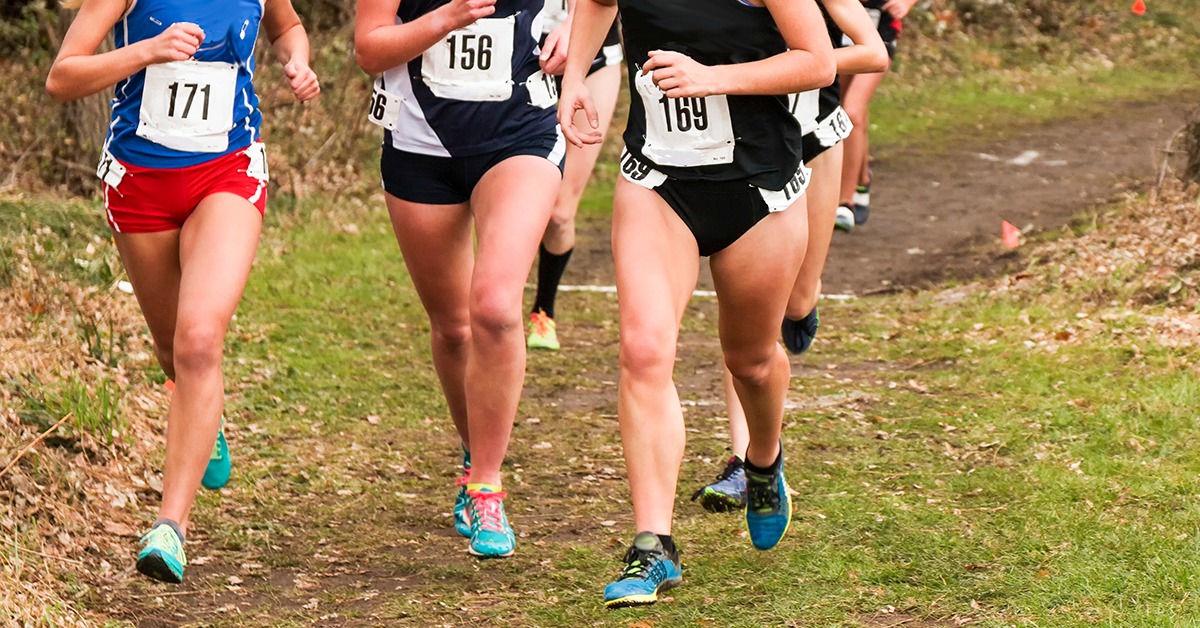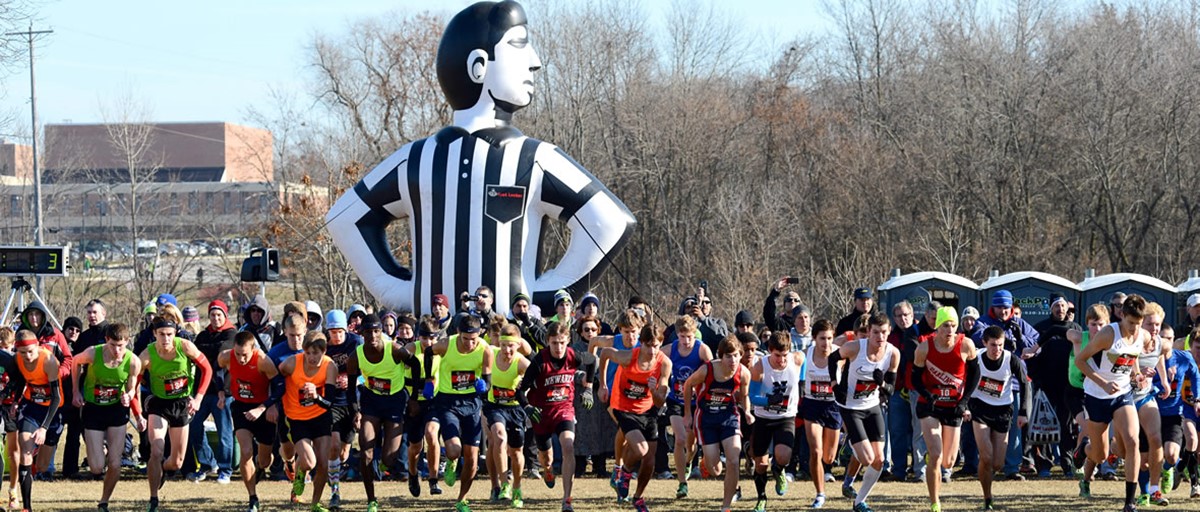Home>Misc>Featured>How Many Teams Run In A Cross Country Meet
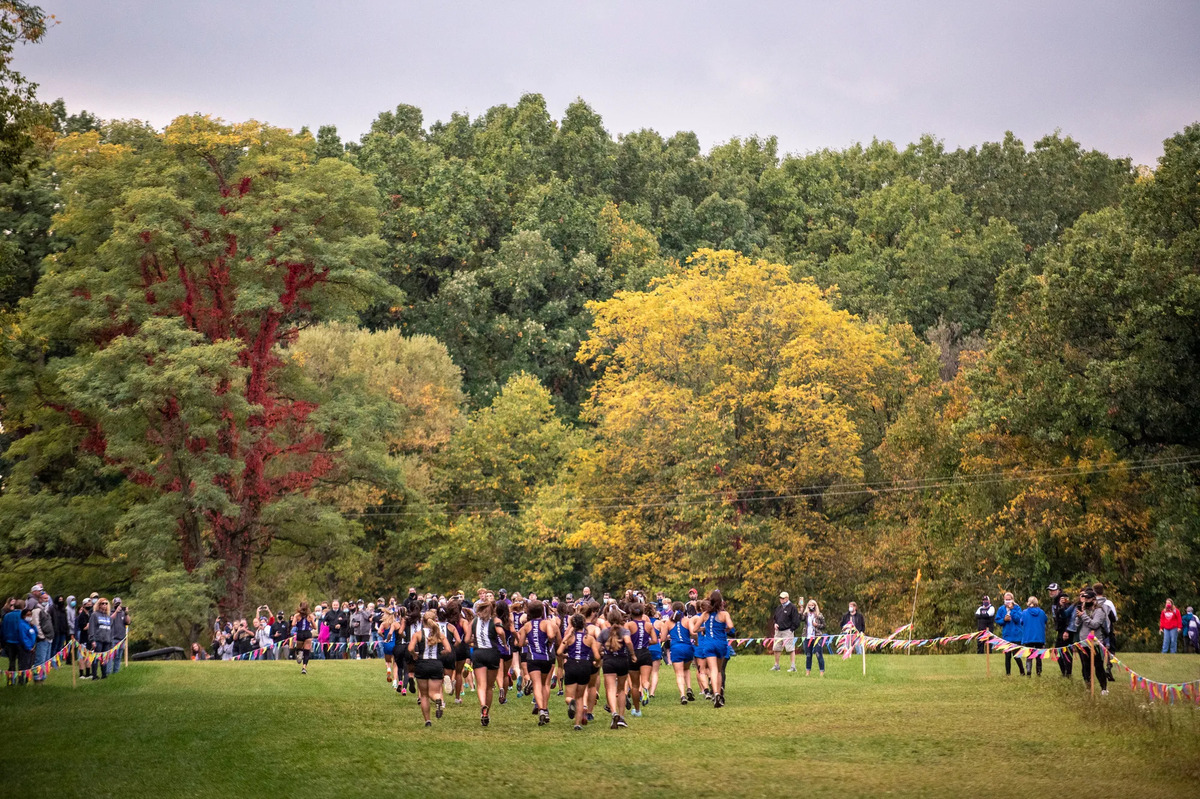

Featured
How Many Teams Run In A Cross Country Meet
Modified: August 21, 2023
Learn how many teams run in a cross country meet and get insights into the featured races, distances, and strategies involved. Become a cross country expert now!
Introduction
Cross country meets are exciting athletic events that bring together teams from different schools and compete over a challenging course. These races are not only physically demanding but also require strategic planning and teamwork. One common question that arises when it comes to cross country meets is how many teams actually participate in these events.
The number of teams in a cross country meet can vary depending on several factors, including the size of the event, the level of competition, and logistical considerations. In this article, we will explore the different aspects of cross country meets and delve into the factors that determine the number of teams that participate.
Cross country meets are typically organized as a way for schools to showcase the talent and abilities of their athletes in the sport of cross country running. These events provide an opportunity for athletes to compete against other schools, test their endurance, and strive for personal and team achievements.
The Purpose of Cross Country Meets
One of the primary purposes of cross country meets is to foster a sense of healthy competition among athletes and promote sportsmanship. These events allow teams to measure their performance against other schools and strive for victory. Cross country meets also provide a platform for athletes to improve their skills, set personal goals, and gain valuable experience in competitive racing.
Furthermore, cross country meets serve as a selection process for higher-level competitions, such as regional or state championships. Athletes who excel in these meets may have the opportunity to represent their school at these prestigious events, which can open doors for scholarships and future athletic endeavors.
Understanding Cross Country Team Sizes
Before delving into the factors that affect the number of teams in a cross country meet, it is important to understand the average team size in cross country. In general, cross country teams consist of a minimum of five athletes and can go up to as many as twelve or more. The actual team size may vary depending on the school, the resources available, and the overall interest and participation in the sport.
The Purpose of Cross Country Meets
Cross country meets serve multiple purposes for athletes, coaches, and schools. These events not only provide a platform for competition and skill development but also promote teamwork, sportsmanship, and physical fitness. Let’s explore the various purposes of cross country meets in more detail.
One of the primary objectives of cross country meets is to foster a sense of healthy competition among athletes. These meets create an environment where athletes can challenge themselves and compare their abilities to those of their peers from different schools. Competing in cross country meets gives athletes the opportunity to showcase their talent and determination while striving for personal and team accomplishments.
Another purpose of cross country meets is to promote sportsmanship and fair play. Athletes are encouraged to compete with integrity and respect for their competitors. While the ultimate goal may be to win, the emphasis is on displaying good sportsmanship, encouraging fellow athletes, and acknowledging their efforts.
Cross country meets are also an avenue for athletes to improve their skills and track their progress. These events provide valuable race experience, enabling athletes to refine their strategies, pacing, and mental focus. By participating in multiple meets throughout the season, athletes have the opportunity to gauge their performance, set personal goals, and work towards achieving them.
Furthermore, cross country meets play a crucial role in selecting athletes for higher-level competitions. Exceptional performance in these meets may earn athletes the chance to represent their school at regional, state, or even national championships. These higher-level competitions not only provide an opportunity for athletes to showcase their skills on a larger stage but can also open doors for scholarships and college recruitment.
Cross country meets also contribute to the overall physical fitness and well-being of the participating athletes. The demanding nature of cross country running helps develop endurance, strength, and cardiovascular fitness. Athletes engage in rigorous training, both during and outside of school hours, to prepare for these meets, promoting a healthy and active lifestyle.
Lastly, cross country meets serve as a community-building opportunity for schools. These events bring together athletes, coaches, parents, and supporters in a shared celebration of athleticism and dedication. The camaraderie developed at cross country meets fosters a sense of school pride and unity.
In summary, cross country meets serve a variety of purposes, ranging from providing a competitive platform for athletes to promoting sportsmanship, skill development, and physical fitness. These events play a crucial role in the athletic journey of cross country runners and contribute to their personal growth both on and off the racecourse.
Understanding Cross Country Team Sizes
When it comes to cross country, the size of a team can vary depending on various factors such as the school’s resources, the level of competition, and the overall interest in the sport. It is important to have a basic understanding of the average team size in cross country to comprehend how these teams function and compete effectively.
In general, cross country teams consist of a minimum of five athletes and can range up to twelve or more. The exact team size is often determined by the school’s policies, coaching staff decisions, and the number of students interested in participating in cross country. Larger schools may be able to field larger teams due to a higher student population and greater athletic resources. On the other hand, smaller schools may have more limited resources and, consequently, smaller team sizes.
While the minimum requirement is five athletes, it is not uncommon for teams to have more members. Having a larger team allows for more flexibility in team composition for different races and events. It also provides a deeper talent pool, allowing for more intense competition within the team during practices and trials.
Furthermore, larger teams can offer advantages in terms of team dynamics and support. Athletes on larger teams have more training partners and teammates to share experiences and motivation with. They can also provide encouragement and guidance to each other during races, ensuring that team spirit remains high.
On the other hand, smaller teams can also possess certain advantages. With a smaller team, it may be easier to maintain a closer-knit group and foster strong team cohesion. Smaller teams can have a more focused and personalized approach to training and development, with coaches being able to provide individual attention to each athlete.
Ultimately, the ideal team size in cross country depends on the specific needs and resources of the school and the preferences of the coaching staff. The main goal is to ensure an optimal balance between competitiveness and camaraderie within the team.
In summary, cross country teams typically range from a minimum of five to a maximum of twelve or more athletes. The specific team size is determined by several factors, including the school’s resources, coaching decisions, and the overall interest in the sport. Both larger and smaller teams have their own advantages, and the ideal team size varies based on the school’s circumstances and goals in cross country.
Factors Affecting the Number of Teams in a Cross Country Meet
The number of teams participating in a cross country meet can vary based on several factors that influence the logistics and organization of the event. Understanding these factors can shed light on why some meets may have more teams than others and how meet organizers determine the number of participating teams.
1. Meet Size and Resources: The size of the meet venue and the available resources play a significant role in determining the number of teams. Larger meet venues with ample space can accommodate a greater number of teams, whereas smaller venues may have limitations on the number of teams they can host. Additionally, the resources available, such as the number of course marshals, timing equipment, and facilities, can influence whether the meet organizers can handle a larger number of teams.
2. Level of Competition: The level of competition can impact the number of teams participating in a meet. Local meets and smaller invitational meets may have fewer teams compared to regional or state-level meets, which attract a larger number of schools from a wider area. The higher the level of competition, the more likely it is for a greater number of teams to be involved.
3. Time Constraints: The duration of the meet is also an important consideration. Organizers need to ensure that the meet is completed within a reasonable time frame, taking into account the number of races and the time required for each race. If there are too many teams, it may result in a congested schedule and lead to delays or an excessively long meet.
4. Safety and Course Capacity: Safety is a top priority in cross country meets. The capacity of the course, including the width of the trails and the number of start and finish lines, must be taken into account. Too many teams on a narrow course can result in overcrowding and increased chances of accidents or injuries. Meet organizers consider the course capacity when determining the number of teams that can safely participate in the meet.
5. Meet Format and Divisional Assignments: The meet format and divisional assignments also impact the number of teams in a cross country meet. Some meets may have multiple divisions based on school size or competition level. This allows teams to compete against schools of similar size or ability. If a meet has multiple divisions, the number of teams participating in each division may be adjusted to ensure fairness and equitable competition.
In summary, the number of teams in a cross country meet is influenced by factors such as the size and resources of the meet venue, the level of competition, time constraints, safety considerations, and meet format. These factors are carefully considered by meet organizers to ensure a well-organized and enjoyable event for all participating teams.
Typical Team Sizes in Cross Country Meets
Cross country teams come in various sizes, but there are some typical team sizes that are commonly seen in meets. These team sizes can vary depending on the level of competition, school resources, and the overall interest in the sport. Understanding the typical team sizes in cross country meets can provide insight into the dynamics of these events.
In most cross country meets, teams are required to have a minimum of five athletes. This minimum team size ensures that there are enough runners to compete as a team and earn a team score. However, the actual team size often exceeds this minimum requirement, with most teams ranging from seven to twelve or more athletes.
Having a larger team offers advantages in terms of depth and versatility. With more runners, a team has the flexibility to field different lineups for various races and tailor their strategy based on the nature of the course. Larger teams can also create a more competitive training environment, allowing teammates to challenge and push each other during workouts and practices.
On the other hand, smaller teams can still be competitive and successful in cross country meets. Smaller teams often have a close-knit bond and a strong sense of camaraderie. With fewer athletes, these teams may focus on building strong individual performances, relying on each runner’s dedication and determination to contribute to the overall team score. This can create a tight-knit and supportive team dynamic.
It is important to note that team sizes can fluctuate depending on the meet and the level of competition. Some meets may have restrictions on the maximum team size to ensure that all participating teams have a fair representation. Additionally, larger invitationals or championship meets may have teams with more athletes due to the higher level of competition and the desire to field their best runners in different events and races.
The specific team sizes in cross country meets can also be influenced by the resources and interest in the sport within a school. Larger schools with greater resources may have the ability to field larger teams due to a larger student population and more ample support from coaching staff and resources. Smaller schools with limited resources may have smaller team sizes but can still be competitive with dedicated athletes and supportive coaching.
In summary, cross country teams typically have a minimum requirement of five athletes, but the actual team sizes can range from seven to twelve or more. Larger teams provide depth and versatility, while smaller teams foster strong team cohesion and close bonds. The specific team sizes can vary depending on the level of competition, school resources, and the overall interest in the sport of cross country.
Variation in Team Sizes at Different Levels of Competition
The team sizes in cross country meets can vary depending on the level of competition. Different levels of competition often have different requirements and considerations that influence the team sizes. Understanding the variation in team sizes at different levels of competition can provide valuable insight into the dynamics of cross country meets.
At the high school level, where many athletes first start their cross country journey, team sizes can range from a small group of dedicated runners to larger teams with several athletes. Some smaller schools or programs may have limited resources and attract a smaller number of athletes, resulting in smaller team sizes. On the other hand, larger schools with more interest in the sport and greater resources may have larger teams to accommodate the higher participation numbers.
In college and university cross country meets, the team sizes may vary depending on the division and the level of competition. NCAA Division I programs, for example, often have larger teams due to the resources and athlete recruitment available to those schools. However, smaller colleges and universities may have more moderate team sizes, as they may have a smaller student population and fewer resources.
At the elite and professional levels, such as national and international competitions, team sizes are often limited to a select number of elite athletes. These teams typically consist of a smaller group of highly talented and top-performing runners. The selection process in these competitions is rigorous, and only the best athletes make the cut to represent their country or team.
It is important to note that team sizes can also vary within the same level of competition based on the specific meet or race. Some invitationals or championship meets may have restrictions on team sizes to ensure fairness and a level playing field. These restrictions may be due to logistical considerations, such as course capacity or time constraints.
Coaches and team managers also have some flexibility in determining the team size for specific races within a meet. They can strategically choose which athletes to include in the varsity or scoring team and may have additional runners competing as individuals or in separate non-scoring categories.
Overall, the variation in team sizes at different levels of competition reflects the diverse nature of cross country meets. From smaller teams at the high school level to larger teams at the collegiate level, and elite teams at the national and international stages, the team sizes adapt to the resources, interest, and competitive dynamics of the specific level of competition.
Advantages and Disadvantages of Different Numbers of Teams
The number of teams in a cross country meet can have both advantages and disadvantages. The size of the meet, along with the number of participating teams, plays a significant role in shaping the dynamics and experiences of the athletes. Understanding the advantages and disadvantages of different numbers of teams can provide insights into the benefits and challenges associated with specific meet sizes.
Advantages of Larger Numbers of Teams:
1. Increased Competition: With a larger number of teams, there is generally a higher level of competition. More teams mean more athletes striving to perform their best, which can push each participant to their limits and create a more intense racing atmosphere.
2. Variation in Skills and Strategies: With a diverse range of teams, there is a greater likelihood of encountering various skill levels, tactics, and race strategies. Athletes have the opportunity to learn from and adapt to different racing styles, which can enhance their overall performance and strategic thinking.
3. Networking and Camaraderie: Larger meets provide more opportunities for athletes to connect and network with runners from different teams. This can foster a sense of camaraderie and friendship among athletes, allowing them to build a broader support network within the running community.
Disadvantages of Larger Numbers of Teams:
1. Congestion and Overcrowding: With more teams, there is a risk of overcrowding on the racecourse, especially at narrow sections or tight turns. This can result in congestion and impede the flow of the race, potentially affecting the performance of individual athletes.
2. Longer Wait Times: In meets with a larger number of teams, athletes may experience longer wait times between races. This can affect their warm-up routines, mental preparation, and overall focus. Athletes must manage their time effectively to ensure they are adequately prepared for their specific race.
Advantages of Smaller Numbers of Teams:
1. Personalized Attention: With a smaller number of teams, coaches and meet organizers can provide more individualized attention to athletes. This allows for a more hands-on approach to coaching, including the ability to provide specific feedback, guidance, and support.
2. Efficient Organization: Smaller meets often result in more streamlined logistics. With fewer teams to manage, meet organizers can ensure a smoother flow of races, reduce wait times, and enhance the overall efficiency of the event.
Disadvantages of Smaller Numbers of Teams:
1. Limited Competition: With a smaller pool of teams, there may be a reduced level of competition. This can impact the intensity and variety of racing experiences, potentially limiting the opportunity for athletes to compete against a broader range of abilities.
2. Decreased Networking Opportunities: Smaller meets may offer fewer opportunities for athletes to network and connect with runners from different teams. This can limit the sense of camaraderie and the chances to build a wider support network within the running community.
Overall, both larger and smaller numbers of teams in cross country meets offer distinct advantages and disadvantages. The ideal balance depends on various factors, including the preferences of the athletes and coaches, the resources available, and the specific meet’s objectives and logistics.
Strategies for Managing Larger or Smaller Cross Country Meets
Managing cross country meets requires careful planning and organization, regardless of the size of the event. Whether it is a larger meet with numerous teams or a smaller, more intimate competition, there are specific strategies that meet organizers can employ to ensure a successful and smooth-running event.
Managing Larger Cross Country Meets:
1. Adequate Resources: Large meets require sufficient resources to handle the logistics effectively. This includes an ample number of course marshals, timing equipment, medical personnel, and support staff. Meet organizers should ensure that these resources are in place to maintain the safety and smooth operation of the event.
2. Efficient Scheduling: Managing larger meets necessitates careful scheduling to prevent overcrowding and delays. By creating a well-planned schedule with appropriate time gaps between races, organizers can minimize congestion and ensure that each race starts and finishes on time.
3. Communication and Information: Clear and timely communication is critical for larger meets. Providing athletes, coaches, and spectators with detailed information about the event, including course maps, starting procedures, and parking arrangements, can help alleviate confusion and streamline the process.
4. Course Design: Designing a course that can accommodate the increased number of teams is crucial. A wider start line and well-defined course markings can help prevent overcrowding and assist athletes in navigating the racecourse efficiently.
Managing Smaller Cross Country Meets:
1. Personalized Attention: With smaller meets, organizers have the advantage of providing individualized attention to athletes. It is important to establish clear lines of communication with coaches and athletes to address any specific concerns and ensure a smooth experience for all participants.
2. Streamlined Logistics: Smaller meets offer the opportunity for more efficient organization. Organizers can optimize resources, such as timing systems and course marshals, to ensure that the event runs seamlessly. They can also focus on creating a more intimate and supportive atmosphere.
3. Community Engagement: Smaller meets present an opportunity to engage the local community. Organizers can encourage community involvement by inviting local schools, colleges, and clubs to participate. This can foster a sense of camaraderie and generate excitement for the sport.
4. Enhanced Participant Experience: Organizers can prioritize creating a memorable experience for athletes at smaller meets. This can include providing personalized bibs or certificates, organizing post-race refreshments, and offering opportunities for athletes to share their achievements and stories.
Overall, effective management of larger or smaller cross country meets involves strategic planning, clear communication, and attention to detail. By understanding the unique requirements of each meet size, organizers can create an environment that allows athletes to perform at their best while fostering a positive and enjoyable experience for all participants.
Conclusion
Cross country meets bring together teams of athletes to compete in challenging races. The number of teams participating in these events can vary based on factors such as the size of the meet, level of competition, and logistical considerations. Understanding the dynamics and management strategies for different team sizes is essential for meet organizers and participants.
Whether it is a larger meet with numerous teams or a smaller, more intimate competition, each team size has its own advantages and disadvantages. Larger meets offer increased competition, networking opportunities, and team depth but may face challenges with congestion and longer wait times. Smaller meets, on the other hand, can provide a more personalized experience, streamlined logistics, and a close-knit team atmosphere but may have limited competition and networking opportunities.
For larger meets, efficient scheduling, adequate resources, and clear communication are key to ensuring a smooth event. Managing smaller meets involves personalized attention, streamlined logistics, and community engagement. Choosing the right strategies for each meet size can enhance the participant experience and foster a sense of community among athletes, coaches, and supporters.
In conclusion, the number of teams in a cross country meet can vary, and each team size offers its own unique dynamics and challenges. By understanding the factors affecting team sizes, the purpose of cross country meets, and implementing appropriate management strategies, organizers can create successful and memorable events for athletes at all levels. Whether it is a small, local meet or a large-scale championship, cross country meets provide an exciting platform for athletes to showcase their skills, foster camaraderie, and pursue their personal and team goals.
